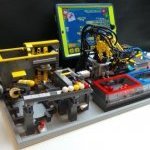
[GBC] Ball Cleaning Machine Project (inspired by Akiyuki)
By
HRU_Bricks, in LEGO Technic, Mindstorms, Model Team and Scale Modeling
-
Recently Browsing 0 members
No registered users viewing this page.

By
HRU_Bricks, in LEGO Technic, Mindstorms, Model Team and Scale Modeling
No registered users viewing this page.